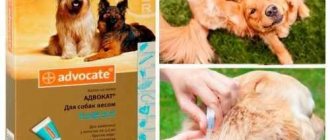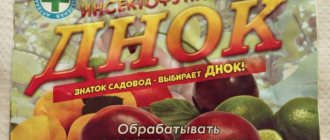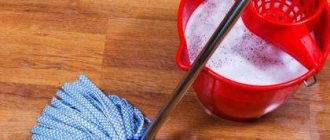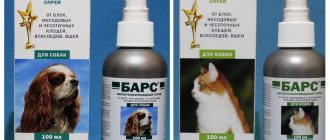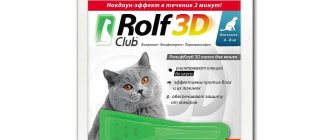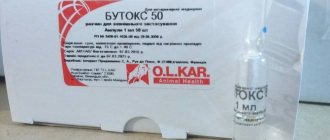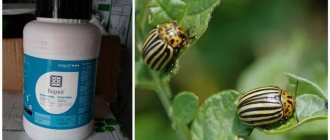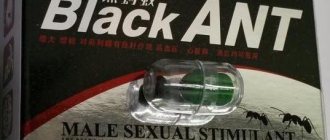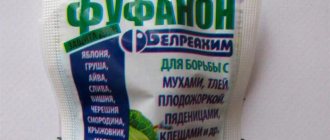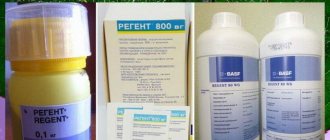Butox is an insecticidal and acaricidal drug that has proven itself in veterinary medicine, according to numerous reviews, as the best. In a nutshell, solutions based on this substance are perfect for getting rid of parasites that cause inconvenience not only to animals, but also to people. The product copes with its task better than analogues (neocidol, ectosan). In addition, Butox is relatively inexpensive. You will find out more details in the provided article below.
Composition of the drug
The active component of the drug is deltamethrin. It is a white, odorless powder with high insecticidal properties. Poorly soluble in water, but very soluble in oils, the drug is non-toxic in aqueous suspensions. Due to this feature of deltamethrin, it is used in tandem with an organic eluent. Thanks to this manipulation, the powder is better distributed in the preparation.
What exactly is Butox? This is a 5% solution of deltamethrin (that is why the drug is sometimes called Butox-50). The finished product smells like kerosene. Forms a stable emulsion with water.
Contraindications and side effects
The use of the drug at an acceptable concentration in doses recommended by the instructions does not produce undesirable effects.
The simultaneous use of Butox 50 and organophosphate insecticides increases the toxic effect of deltamethrin.
Expert opinion
Sadchikov Nikolay Alekseevich
Veterinarian ornithologist
Ask a Question
Weakened and sick individuals are not treated with the drug. Butox 50 concentrate and solution are not used on open wounds and damaged areas of the body.
Eggs and meat of chickens treated with the drug cannot be used for food for five days after treatment and prevention.
The use of a drug that has expired is not allowed.
Purpose
The drug is intended for the destruction (poisoning) of ectoparasites. Kills insects in the larval and adult stages, but does not affect eggs. You must wait about three days before new pests hatch for the Butox to poison them.
Treat with this solution:
- animals;
- walking;
- stall;
- Living spaces;
- staff clothes.
Butox has protective properties against ticks, lice and flies. Contact with the skin of warm-blooded animals does not cause harm, but if the substance moves inside, intoxication of the body will occur. When working with the drug, you need to protect mucous surfaces: eyes, mouth, nose.
Treatment of chickens and premises
The drug can be used to kill chicken parasites in several ways:
- medicinal baths;
- spraying;
- room treatment.
To prepare a floating bath for swimming, 0.9 liters of the drug is needed per ton of cool tap water. The prepared solution is thoroughly mixed for ten minutes to obtain a more uniform emulsion. Next, the birds in small groups (10-20 birds) are driven through a container with an evenly distributed solution.
The bird should not be tired or hungry. In addition, it is necessary to give the chickens a drink first; to avoid ingesting the solution, which may be toxic, it is better to avoid getting the solution into the bird’s body.
When preparing a solution for spraying chickens, take 50-100 ml of the drug per 100 liters of water. The components of the solution mix well. Each feather of the bird is carefully sprayed with the prepared composition. The applied emulsion should dry; there is no need to rinse off the solution.
In addition to treating the poultry itself, it is also necessary to disinfect the premises in which the chickens are kept. The solution for treating premises consists of 15-30 ml of the drug per 10 liters of water. Before spraying, it is necessary to clear the room of food residues, sweep the floors, clean all boxes, feeders and perches. After this, the solution is evenly applied using a spray bottle to horizontal and vertical surfaces, floors, and walls. Since the active ingredient of the drug is moderately toxic, the premises should be left empty for several days. Chickens can only be returned to their original habitat after thorough ventilation.
If the poultry and the premises in which the chickens are kept are thoroughly treated, repeated spraying will not be necessary. The substance of the drug destroys the colony of parasites completely.
How can you recognize cloacitis in chickens and how to cure this disease? Find out about this by reading our article.
Why do roosters' combs turn black? All reasons are described here.
Application
The drug must be prepared directly on the day of its use, otherwise volatile substances will be removed from the emulsion, reducing the effectiveness of the product.
Butox is used for:
- bathing small livestock and poultry;
- spraying cattle;
- wetting lesions on animal skin;
- treatment of residential and domestic premises;
- spraying paddocks, stalls, poultry houses.
Let's consider the above points in more detail.
Pros and cons of Butox 50
Butox 50, like all existing drugs, has both advantages and disadvantages.
Among the positive qualities of the solution are:
- High efficiency;
- Fairly low level of toxicity;
- Availability (the cost of 1 ml ampoule in any pharmacy is on average 100 rubles);
- Mixes well and dissolves in ordinary tap water.
Disadvantages of the drug:
- Unpleasant pungent odor;
- The drug cannot be used on animals whose age is under six months;
- The result of application appears only a day after spraying.
Processing of farm animals
Spraying cows
Product dosage per 100 liters of water:
- for scabies - 100 ml;
- lice - 25 ml;
- flies, ticks - 50 ml.
Fill the spray container with the working solution (you can use a garden sprayer). One cow requires 3 liters of diluted drug.
Spray in sequence:
- head (ears, head);
- body (neck, withers, back, sacrum);
- area around the anus and tail;
- limbs.
If the animal is not feeling well (lethargic, there is a suspicion or conclusion of illness), it is better to delay treatment until the cow has completely recovered.
Avoid getting the emulsion into your eyes and nose. After treatment, prevent animals from licking the drug from the fur. Do not touch the fur of cows with your hands without gloves for three days. Also exclude slaughter.
Spraying rabbit ears
Dosage: 0.5 ml per 0.5 liter of water.
Take 0.5 ml of the drug into a three-cc syringe and dilute it in 1/2 liter of water in a spray bottle.
Spray the ears, avoiding contact with the eyes, nostrils, and mouth.
In 2 weeks the ears will be clean.
Sheep bathing
Product dosage per 100 liters of water:
- for scabies - 100 ml;
- lice - 25 ml;
- flies, ticks - 50 ml.
Bathing is carried out in warm weather, after shearing sheep, which ensures access of the drug to the animal’s skin. They use a bathtub, which is filled with water with butox dissolved in it. After bathing, it is not recommended to touch sheep with hands without gloves or immediately slaughter them.
Poultry processing
Dosage: 1 ml of butox per 1 liter of water.
It is more convenient for two people to bathe a bird:
- one serves;
- the second bathes and makes sure that the product does not get into the eyes.
Afterwards, the bird is taken out of the room. All litter and fluff is removed. Walls and floors are being processed. Then - mandatory ventilation.
Premises treatment
Most often, it is animals that cause the appearance of ectoparasites (fleas, ticks, lice).
Fleas prefer to settle throughout the entire area of the room, at a height of no more than 1 meter. The most favorite places of insects:
- carpets;
- rugs;
- baseboards;
- furniture;
- animal habitats.
Fleas can crawl into the most secluded place in a room.
Mix 1 ampoule of the drug with 4 liters of water and treat the room with a spray bottle or sprayer. Afterwards, ventilate for 2 hours. Repeat treatment after 10 days (taking into account the insect development cycle).
Safety precautions must be followed. Before working with the product, put on:
- gloves;
- respirator;
- protective glasses;
- robe or protective suit.
Poultry houses are treated by spraying walls, floors, ceilings, jambs and doors. Prepare a solution at the rate of 3 ml of butox per 1 liter of water.
Mites (downy pyroeaters), which parasitize birds, love to live in wooden flooring, doors and other wood trim.
Active ingredient and principle of action
Deltamethrin is used as the main active ingredient of Butox. This is a highly effective insecticide from the pyrethroid group used in agriculture. Like most isomers of this group, the action of deltamethrin is based on the activity of chrysanthemum acid, the free radicals in the formula are bromine atoms. In its technical form, deltamethrin is insoluble in water, so in the household it is used in ready-made form in Butox ampoules of 1 ml, the contents of which are diluted in 3-4 liters of water and used for treating premises and animals.
Method of penetration and absorption - contact and intestinal pesticide. Butox is used only for external use; recommended doses do not cause allergies. The substance is widely used in the agricultural sector, in households and in medicine to combat a number of parasites, harmful and synanthropic insect species. The deltamethrin formula contains only 1 isomer, which has a strong insecticidal effect. To create the drug, the one that has the most powerful insecticidal effect of the 8 existing isomers was chosen.
All pyrethroids have a destructive effect on the insect’s nervous system, disrupting calcium metabolism in synapses, and act on potassium-sodium channels, disrupting acetylcholine metabolism. As a result of strong stimulation of the nervous system, exoparasites die, and the protective effect of the active substance lasts about 15 days.
Analogue preparations of deltamethrin contained in Butox include butoflin, splender, decamethrin and others. The preparations are used for spraying agricultural crops and controlling pests. For warm-blooded representatives of the animal world, including humans, deltamethrin and Butox are moderately toxic substances. It is not used near apiaries; residues are not poured into open ground near water bodies due to the high toxicity of the isomers to fish.
Precautionary measures
The bottle is dangerous for a person if safety precautions are violated. Before working with the product, you must:
- put on gloves;
- protective suit;
- glasses;
- respirator;
- take 5-10 tablets of activated carbon to bind and remove toxins that have entered the body.
If the solution gets on your skin, rinse thoroughly with running water.
Butox should not be used together with phosphorus-containing insecticides.
Composition and release form
The main component of the product is deltamethrin, which belongs to the group of pyrethroids of synthetic origin. It has long been known that pyrethrum can repel various insects.
It is very convenient that the drug can be bought in the quantity you need
The active component does not dissolve in water, as it is similar to wax. An auxiliary component is an organic eluent. The drug is often called Butox 50, because it is a 5% deltamethrin solution. An insecticide is an oily liquid with an unpleasant odor of kerosene, which forms a whitish emulsion. The product can be produced in different packages, starting from 1 ml glass ampoules and ending with 1 liter metal containers.
Pharmacology of the drug
Pyrethroids can come into contact with skin lipids. In this case, the solvent and water evaporate, and waxy substances join the fats. For all warm-blooded organisms, pyrethroids are practically non-toxic, since they remain on the surface and are not absorbed.
At the next stage of protection, the active substance is destroyed into harmless compounds . In cold-blooded organisms, the body does not have protective functions, so when the pyrethroid ends up on the insect's body or in its intestines, it deactivates acetylcholine. As a result, the arthropod experiences paralysis, after which it quickly dies.
The instructions for using Butox in veterinary medicine warn: when working with the drug, you need to be extremely careful . If the drug gets into the soil near the river, the fish will die, if it gets on a honey plant, the bees will die.
Video instructions about the qualities of this drug:
Precautionary measures
According to the instructions for use of Butoxcept 5 ml, this drug is moderately toxic for humans.
When working with it, you need to be careful, protecting your skin and face from the emulsion.
To do this, you should wear goggles, gloves, special clothing and a respirator. If the concentrate gets on your skin, you should immediately remove it with a stream of water. And before starting work, it is recommended to drink 7-10 tablets of activated carbon.
Butox 1 ml cannot be used on mammals that are under one year old or sick. It is also prohibited to combine Butox with organophosphate drugs. It is better to process cows during dry periods or give their milk to animals.
The drug should be stored in non-residential premises where there is no heating, since Butox contains a solvent that evaporates. The shelf life of the drug is 4 years at a storage temperature of -15...+40°C.
It is not recommended to consume milk from cows that have recently been processed
Efficiency
The domestic drug is much more effective than the imported one. A foreign product works great outside our country or in the first year of its appearance on the Russian market. Subsequently, this drug begins to be diluted, which reduces its beneficial properties. For example, spraying dogs
Butox has long been the most effective means of combating external parasites in Russia. The cost of the drug in large containers (especially for farmers) is much cheaper than in ampoules. The only negative is that the protection against ectoparasites is short-lived. It is necessary to repeat the treatment after 10 days due to the development characteristics of insects.
Treatment of poultry housing areas
To get rid of blood-sucking parasites, it is extremely important to clean and disinfect the premises where birds are kept . You only need to work in protective clothing, paying special attention to respiratory protection.
The number of birds is removed from the chicken coop. Before processing, clean all feeders, boxes, perches, partitions and cages. The remaining food and bedding are taken out and burned, and the floor is swept.
The solution is mixed at the rate of 15-30 ml of Butox 50 per 10 liters of water. Per 100 sq. m requires 5-10 liters of solution depending on the type and porosity of surfaces .
The resulting emulsion is evenly sprayed on all areas of the chicken coop: walls, ceiling, floor, perches, cages and partitions. Joints, corners, crevices, fastenings and other hard-to-reach places are intensively processed.
After wet treatment, keep the room tightly closed for 3-4 hours, then ventilate well for several days. After ventilation is completed, new bedding is laid and the chickens are released. .
For prevention, chicken coops are cleaned and disinfected regularly, at least 1-2 times a year, regardless of the illness of the chickens. It is important to constantly ventilate the room and periodically change the bedding, preventing the creation of a humid environment for the spread of harmful microorganisms and insect larvae.
Reviews about the drug from breeders
Dog owners note that Butox really protects their pets from parasites.
Irina, Khabarovsk. A dog appeared in our apartment recently, but we met Butox much earlier. Our apartment is on the first floor, so our guests every year were ants and all sorts of bugs that appear from dampness. Someone recommended Butox, which helped us quickly get rid of these parasites. And when we got an Alabai, we didn’t even think about how to get fleas out of him. The only inconvenient moment for us was that we had to completely bathe our pet and then wrap him up so that he would not lick his lips. Gradually, the Admiral got used to bathing and dressing, so we started using Butox as a preventive measure against ticks.
Marina, Suvorov. Butox was recommended to us by friends. There are quite a few pets living in our house, so the choice was precisely inexpensive products. Having purchased Butox, we treated all our cats and dogs with it, but were unpleasantly surprised by the smell. The unpleasant aroma seemed to permeate the animals through and through. But this was our first meeting with this product. When we resorted to using it again, we, strangely, did not smell it. It turned out that this was a matter of habit. For the second year now, Butox has always been on the shelf in our country house. Even though our animals are treated, they run around the street and “catch” parasites from other yard animals. The instructions say that the protective effect of the drug lasts up to 15 days. I can confidently confirm this from my own experience. Our Busyas and Basyas have enough protection for almost a month. Only after this period has expired do we have to carry out processing again.
Pest control
Treatment of the premises with Butox
Butox for fleas in an apartment is used according to the general rules. The spray bottle or bottle is kept at a distance of 20 cm from the surface to be treated. Treatment begins in places where parasites may live, or where larvae have been found.
Be sure to spray baseboards, window sills, walls at a height of up to 2 m from the floor, furniture on the back side, animal bedding, and the entire floor surface.
Disinsection must be carried out in all rooms in the house, since fleas can live in any of them. Insects do not build nests, but scatter eggs wherever they can. However, the room where the pet’s sleeping place is located must be thoroughly processed.
Important!
Butox flea repellent kills most insects within the first 2 hours. However, it is worth leaving the drug on the surface for about another day. In this case, the product destroys the larvae that gradually emerge from the eggs. Insects do not have time to go through the entire development path, do not have time to reproduce, and the family of parasites is exterminated.
At the end of disinfestation, the room must be left closed for at least 2 hours. After this, ventilate thoroughly for the same amount. Wash in places where hands may touch. After 14 days, to consolidate the result, it is necessary to re-treat the room.
Pharmacological properties
Deltamethrin is a synthetic pyrethroid that destroys fleas, flies, ticks, bedbugs, midges, and other arthropods that have developed immunity to organophosphorus and organochlorine pesticides. Butox penetrates the parasite's body through the enteral or contact route and blocks the activity of peripheral nerves. The parasite loses coordination of movements and dies.
Deltamethrin enters into an adhesive interaction with animal skin lipids and protects them from arthropod attacks for 7-10 days. The drug is moderately toxic to warm-blooded organisms and, if the recommendations for use are followed, does not cause side effects. Butox is poisonous to cold-blooded animals - bees, fish and others.
special instructions
After using the drug to treat cattle, animal milk and meat are prohibited from being consumed for five days.
A container contaminated with the drug should be disinfected with a five percent soda ash solution for 5-6 hours.
Unused residues of the product are neutralized with a five percent solution of caustic alkali or slaked lime.
The drug "Butox-50" is effective in the fight against blood-sucking parasites. It is suitable for treating animals and disinfecting premises. If you follow the instructions and use the drug correctly, you can quickly get rid of parasites and not cause harm to the health of your household and pets.
“Butox-50” in ampoules: instructions for use, analogues
Reviews of this drug often receive praise. What causes this? Let's figure out what the features of this tool are and how to use it correctly. The antiparasitic agent “Butox-50” looks like an oily liquid of light yellow color, which has a specific odor, not very pronounced. For use at home, use “Butox-50” in ampoules, which allows you to correctly and without much effort prepare an active solution that is safe for others. For convenience, the ampoules are packed in cardboard boxes of five pieces.
“Butox-50,” the instructions for use of which are in the package, is used to kill fleas, lice, lice, chicken mites, scabies and ixodid mites, as well as flies, mosquitoes and bedbugs.
The working solution of the drug must be prepared immediately before use. To do this, the concentrated Butox-50 emulsion is diluted with cool tap water in proportions that depend on what parasites are to be fought:
- Lice, fleas, lice eaters – 1 ampoule (1 ml) per 4 liters of water. Repeated treatment is carried out after a month.
- Ixodid ticks – 1 dose per 1.5 liters of water. The second treatment should be carried out after 2 weeks, and after that - as necessary.
- Scabies mites – 1 ampoule per 1 liter. Not only the affected area should be treated, but also the area around it. After a week and a half, the event is repeated.
Calculate the required concentration of the drug using the general formula:
(A*B)/C=X, where A is the required concentration of the working solution; B – required amount of emulsion (ml); C – content of active substance in solution (%); X is the amount of concentrate (5%) required to prepare 1 liter of working fluid.
For example, you need to prepare a liter of solution with a concentration of 0.004%. The data is substituted into the formula and you get:
X= (0.004%*1000 ml) / 5%
X= 0.8 ml
This means that in order to prepare 1 liter of 0.004% solution, you need to take 0.8 ml of concentrate (5%); for 10 l – 8 ml of “Butox” (8 ampoules), which is diluted in a small amount of water and poured into the prepared container, then adjusted to the required volume.
Analogues of “Butox-50” are the following drugs:
- “Neocidol”;
- “Neostomazan”;
- “Sebacil 50%”;
- "Ektosan";
- “Biofly”;
- "Deltalan-50".
General precautions when working with the drug
When working with the drug “Butox-50” in ampoules, the instructions require the following general precautions:
- Use personal protective equipment: gloves, protective clothing, respirators, goggles.
- Observe personal hygiene measures after working with the product: wash hands and exposed areas of the body with soap.
- Do not allow direct contact of the product with the skin or mucous membrane.
- Avoid getting the drug into the respiratory tract and gastrointestinal tract.
- It is prohibited to use Butox simultaneously with organophosphorus chemicals.
- Do not pet animals for three days after using the product.
Hazard class and safety measures
In accordance with GOST, “Butox” belongs to the third class of hazard, that is, to moderately dangerous substances that can cause an allergic reaction if the dosage is violated and poisoning if ingested, but do not pose the same danger to warm-blooded creatures as to insects
The following precautions must be observed when using this drug:
- Before using the product, you must carefully read the instructions for use.
- When using the product, you must wear protective clothing, which, among other things, includes safety glasses, a hat, a respiratory mask and disposable rubber gloves. It’s best to wear things that you won’t mind throwing away later.
- After completing the treatment, you must thoroughly wash all exposed areas of the body with soap.
- In case of contact with mucous membranes or inside the body, it is necessary to immediately rinse them with a significant volume of water. If these measures do not help and an allergic reaction occurs or any side effects occur, you should immediately seek emergency professional medical help.
- Empty Butox containers, as well as unused remains of the product, are subject to mandatory disinfection. This procedure is carried out by allowing soda ash to sit in a prepared solution for at least 6 hours, after which the container must be rinsed with clean water.
- The containers in which the product was located are not allowed to be further used for household or any other purposes, even if they have been thoroughly disinfected.
